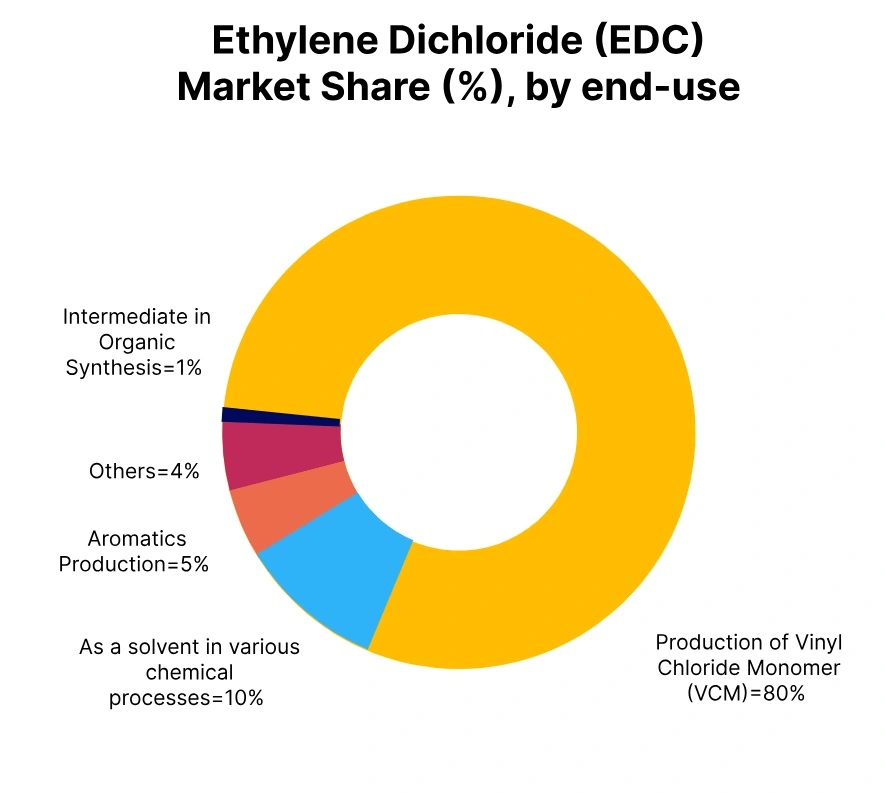Price-Watch’s most active coverage of Ethylene Dichloride (EDC) price assessment:
- Industrial grade (99.8% min) FOB Hamburg, Germany
- Industrial grade (99.8% min) FD Rotterdam, Netherlands
- Industrial grade (99.9% min) FOB Hamad, Qatar
- Industrial grade (99.9% min) FOB Jeddah, Saudi Arabia
- Industrial grade (99.8% min) FOB Texas, USA
- Industrial grade (99.9% min) CIF Nhava Sheva (Saudi Arabia), India
- Industrial grade (99.8% min) CIF Nhava Sheva (USA), India
- Industrial grade (99.8% min) Ex-Mumbai, India
Ethylene Dichloride (EDC) Price Trend Q3 2025
In Q3 2025, the global Ethylene Dichloride market experienced a notable downward trend, with prices declining by around 5–30% compared to the previous quarter. The drop was primarily driven by weaker demand for downstream vinyl chloride monomer and polyvinyl chloride products, coupled with lower feedstock ethylene and chlorine costs.
High production levels across major manufacturing regions, combined with elevated inventory positions and cautious buying behavior among end-users, further intensified the price decline. Looking ahead to the next quarter, gradual stabilization in feedstock pricing and potential recovery in PVC demand are expected to help the ethylene dichloride market regain balance, although significant price volatility may persist in certain regions.
Germany
Ethylene Dichloride Export prices FOB Hamburg, Germany, Grade- Industrial grade (99.8% min).
In Q3 2025, Ethylene Dichloride (EDC) prices in Germany exhibited a moderate downward movement, with Ethylene Dichloride prices in September 2025 ranging between USD 100–120/MT on an FOB Germany basis.
The Ethylene Dichloride price trend in Germany was influenced by fluctuating feedstock ethylene and chlorine costs, alongside stable operating rates at major domestic production facilities. Softer demand from downstream vinyl chloride monomer and polyvinyl chloride sectors slightly weighed on market sentiment.
Meanwhile, the Ethylene Dichloride price in India followed a similar direction, mirroring the global pricing sentiment. The Ethylene Dichloride price trend in India remained subdued due to sufficient inventories and limited downstream pull from the PVC industry, reflecting the influence of the weakening Ethylene Dichloride prices in September 2025 across major exporting regions.
Netherlands
Ethylene Dichloride Free Delivered prices FD Rotterdam, Netherlands, Grade- Industrial grade (99.8% min).
According to PriceWatch, In Q3 2025, Ethylene Dichloride (EDC) prices in the Netherlands experienced a moderate downward movement, with Ethylene Dichloride prices in September 2025 ranging between USD 130–150/MT on an FD Netherlands basis.
The Ethylene Dichloride price trend in the Netherlands was largely shaped by softer feedstock ethylene and chlorine costs, along with steady operating rates at key regional production facilities. Weaker demand from downstream vinyl chloride monomer and polyvinyl chloride sectors exerted mild pressure on market sentiment.
Qatar
Ethylene Dichloride import prices FOB Hamad, Qatar, Grade- Industrial grade (99.9% min).
In Q3 2025, Ethylene dichloride (EDC) prices in Qatar showed a moderate downward movement, with EDC prices in September 2025 ranging between USD 180–230/MT on an FOB Qatar basis. The EDC price trend in Qatar was influenced by softer feedstock ethylene and chlorine costs, alongside steady operating rates at major domestic production facilities.
Weaker demand from downstream vinyl chloride monomer and polyvinyl chloride sectors exerted mild pressure on market sentiment. Despite these factors, balanced supply conditions and consistent export activity helped prevent sharper declines.
Saudi Arabia
Ethylene Dichloride import prices FOB Jeddah, Saudi Arabia, Grade- Industrial grade (99.9% min).
In Q3 2025, Ethylene dichloride (EDC) prices in Saudi Arabia displayed a moderate upward-to-stable trend, with EDC prices in September 2025 ranging between USD 150–190/MT on an FOB Saudi Arabia basis.
The ethylene dichloride price trend in Saudi Arabia was supported by relatively firm feedstock ethylene and chlorine costs, along with steady operating rates at major domestic production plants. Stronger demand from downstream vinyl chloride monomer and polyvinyl chloride sectors provided additional support, even as some supply-side pressures persisted.
USA
Ethylene Dichloride import prices FOB Texas, USA, Grade- Industrial grade (99.8% min).
According to PriceWatch, in Q3 2025, Ethylene dichloride prices in the USA exhibited a mild downward movement, with EDC prices in September 2025 ranging between USD 100–150/MT on an FOB USA basis.
The ethylene dichloride price trend in the USA was influenced by fluctuating feedstock ethylene and chlorine costs, along with stable operating rates at key domestic production facilities. Softer demand from downstream vinyl chloride monomer and polyvinyl chloride sectors exerted slight pressure on market sentiment.
India
Ethylene Dichloride import prices CIF Nhava Sheva, India, Grade- Industrial grade (99.8% min).
According to PriceWatch, in Q3 2025, Ethylene dichloride (EDC) prices in India reflected a soft-to-moderate downward movement, with EDC prices in September 2025 ranging between USD 210–240/MT for imports from Saudi Arabia and USD 160–190/MT for imports from the USA on a CIF India basis.
The ethylene dichloride price trend in India was largely influenced by the declining FOB prices in Saudi Arabia and the USA, alongside steady freight rates and consistent import availability. Domestic demand from downstream vinyl chloride monomer and polyvinyl chloride sectors remained cautious, as buyers-maintained inventories at moderate levels.



